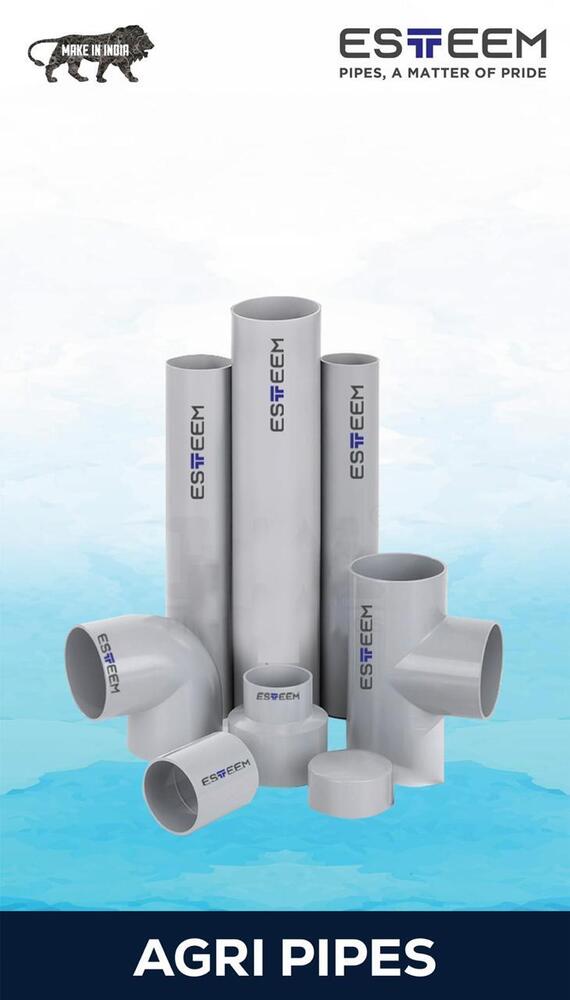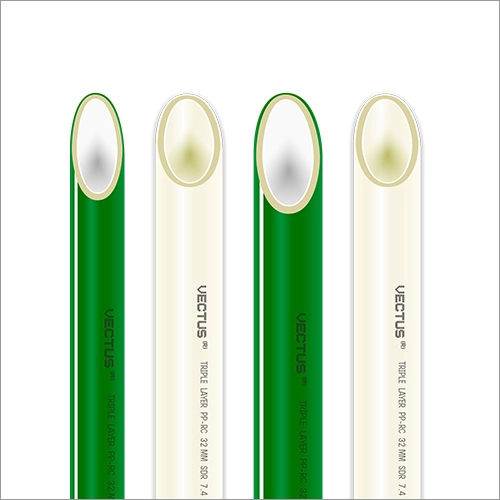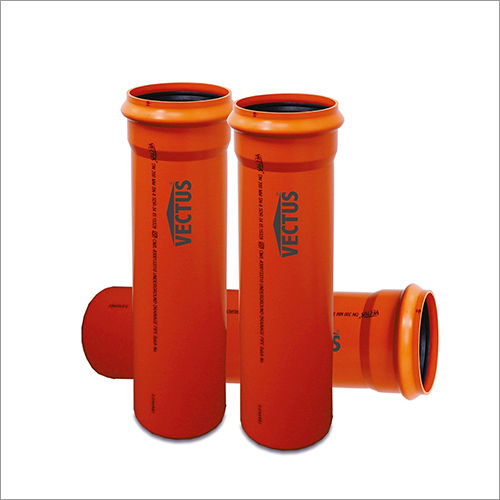UPVC Pipe
Price 120.00 INR/ Square Foot
MOQ : 100 Square Foots
UPVC Pipe Specification
- End Protector
- Available with socket cap or rubber ring
- Tolerance
- 0.5 mm Meter
- Product Type
- PVC Water Pipes
- Type
- Seamless
- Shape
- Round
- Standard
- AISI
- Diameter
- 20 mm to 315 mm Meter (m)
- Thickness
- 2 mm to 12 mm Meter
- Length
- 3 m, 6 m, or custom Yard
- Color
- White
UPVC Pipe Trade Information
- Minimum Order Quantity
- 100 Square Foots
- Payment Terms
- Cash in Advance (CID)
- Supply Ability
- 5000 Square Foots Per Month
- Delivery Time
- 7 Week
- Main Domestic Market
- East India
About UPVC Pipe
Supported by a team of talented professionals, our organization is considered as one of the leading manufacturers of quality approved PVC Pipe . This pipe is manufactured using premium grade polyvinyl chloride and advanced techniques with the help of our ingenious professionals. Due to its excellent strength and leakage proof design, the provided pipe is extensively appreciated to be used for conveying fluids in chemical, petrochemical, automotive and other industries.
Superior Material and Build Quality
Fabricated from high-grade unplasticized polyvinyl chloride (UPVC), these pipes boast exceptional resistance to corrosion, acids, and chemicals. The seamless construction and smooth surface finish prevent deposits and deliver hassle-free maintenance. Their high impact strength enhances durability under demanding conditions, while the white color adds a clean appearance suited for a range of installation settings.
Flexible Applications and Easy Installation
These UPVC pipes suit various water supply, plumbing, and irrigation systems. Their compatibility with solvent cement and rubber ring joint installation methods allows for quick, secure, and leak-proof connections. End protectors are provided via socket cap or rubber ring, accommodating diverse project requirements. Available in standard lengths of 3 m and 6 m or customized sizes to suit specific needs.
Standards Compliance and Safety Assurance
Our UPVC pipes adhere strictly to both ISI and ASTM standards, ensuring reliability and performance in every use case. The pipes provide UV resistance for outdoor installations and possess a self-extinguishing fire rating, making them a safe choice for residential, commercial, and agricultural applications.
FAQs of UPVC Pipe:
Q: How do I properly install these UPVC pipes for water supply or plumbing systems?
A: To install UPVC pipes, use either a solvent cement technique or a rubber ring joint, depending on your system requirements. Ensure that pipe ends are clean and square. For solvent cement, apply adhesive evenly, then fit and twist the pipe into the socket. With rubber ring joints, insert the pipe end firmly into the socket until it reaches the stop. Both methods guarantee a leak-proof connection.Q: What are the primary benefits of choosing UPVC pipes over conventional metal pipes?
A: UPVC pipes offer superior corrosion and chemical resistance, high impact strength, and a lightweight profile compared to metal alternatives. They do not react with most acids and chemicals, have a smooth surface to minimize pressure loss, exhibit self-extinguishing properties in fire situations, and are easier and faster to install, reducing labor and long-term maintenance costs.Q: When should I opt for a pressure rating of 2.5 kg/cm versus 10 kg/cm?
A: Choose the pressure rating based on your systems working conditions: 2.5 kg/cm is suitable for low-pressure applications such as domestic water distribution or irrigation, while 10 kg/cm fits high-pressure requirements like main water lines or industrial plumbing. Selecting the correct pressure ensures system integrity and safety over time.Q: Where are UPVC pipes commonly used in India?
A: UPVC pipes are widely used across residential, commercial, and agricultural sectors throughout India. Typical applications include water supply lines, plumbing networks, and irrigation systems for farms. Their ability to withstand Indias diverse climate conditions and compliance with national and international standards make them a popular choice.Q: What is the process for selecting the correct pipe diameter and thickness for my project?
A: Assess your systems flow requirements, expected pressure, and application to select the appropriate diameter (ranging from 20 mm to 315 mm) and wall thickness (2 mm to 12 mm). Consult the project design specifications or seek guidance from a supplier to ensure optimal performance and compliance with industry standards.Q: Can these pipes be used in outdoor applications, and how do they handle sun exposure?
A: Yes, these UPVC pipes feature excellent UV resistance, making them ideal for outdoor installations. They maintain structural integrity and color even with prolonged sun exposure, ensuring reliability for irrigation and above-ground plumbing networks.
Tell us about your requirement

Price:
Quantity
Select Unit
- 50
- 100
- 200
- 250
- 500
- 1000+
Additional detail
Mobile number
Email
More Products in UPVC Pipe Category
Pressure Plus Agri Pipe
Price 90 INR / Square Foot
Minimum Order Quantity : 100 Square Foots
Product Type : PVC Water Pipes
Color : Grey
Standard : AISI
Shape : Round
Swr Pipes
Price 350 INR / Piece
Minimum Order Quantity : 100 Pieces
Product Type : PVC Pressure Pipes
Color : grey
Standard : Other, IS: 13592, IS: 4985
Shape : Round
PPR Pipes
Price 95 INR / Square Foot
Minimum Order Quantity : 100 Square Foots
Product Type : PVC Water Pipes
Color : White
Standard : AISI
Shape : Round
PVC Underground Drainage Pipe
Price 125 INR / Square Foot
Minimum Order Quantity : 100 Square Foots
Product Type : PVC Water Pipes
Color : Orange
Standard : AISI
Shape : Round
ESTEEM TUBES PRIVATE LIMITED
GST : 19AABCE2686G1ZI
GST : 19AABCE2686G1ZI
P.S. DOMJUR, MOUZA 26, domjur, Begari, Bipra Noapara,
Howrah,Kolkata - 711411, West Bengal, India
Phone :08071931088
 |
D. K. TRADING CORPORATION
All Rights Reserved.(Terms of Use) Developed and Managed by Infocom Network Private Limited. |

 Send Inquiry
Send Inquiry





